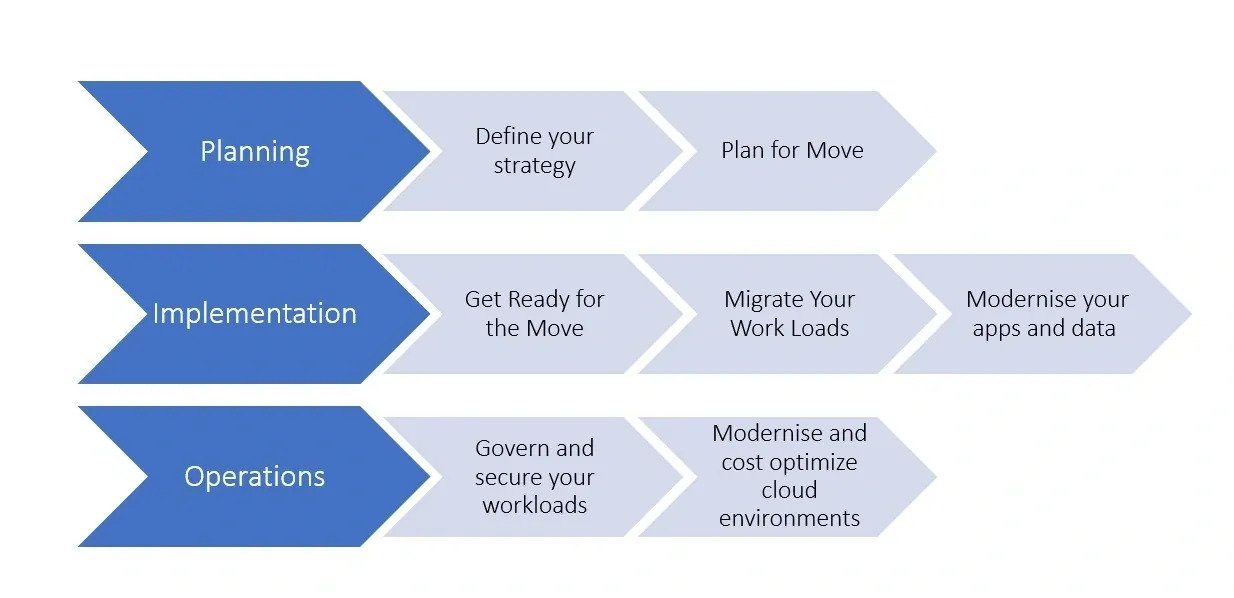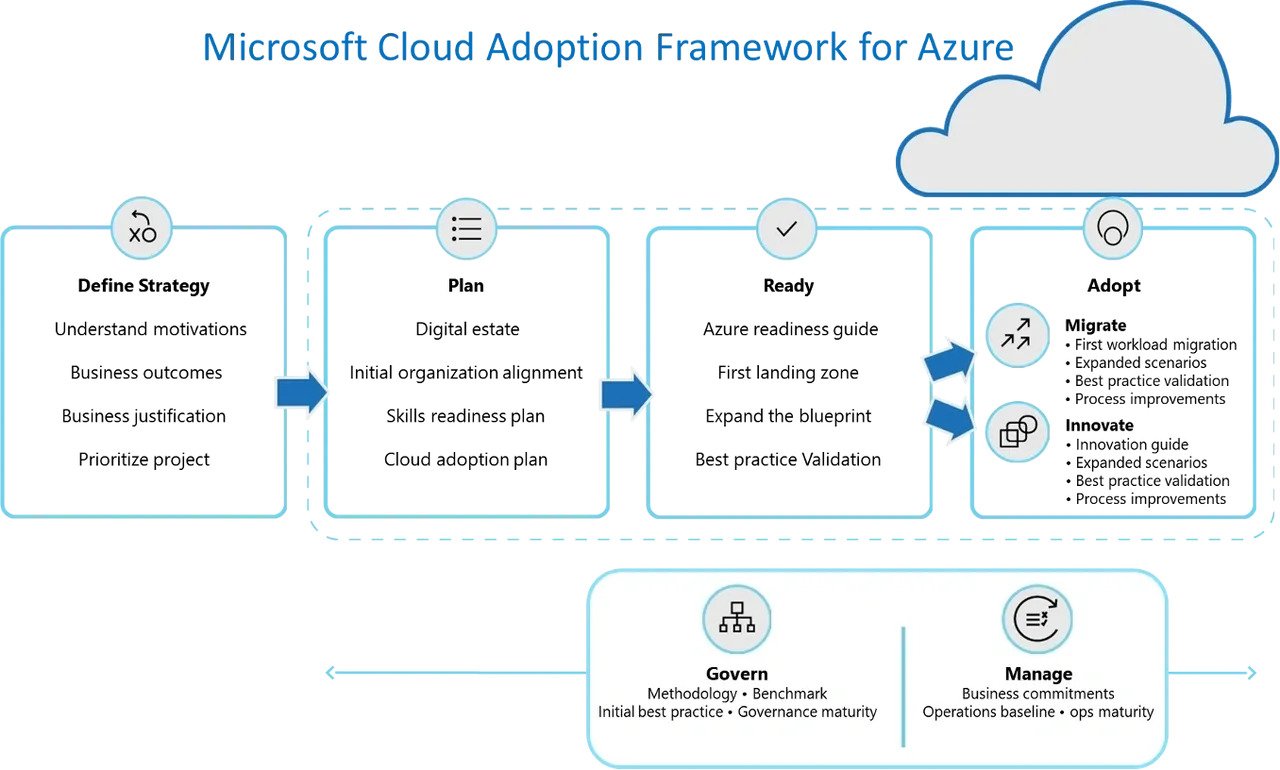
MIGRATION TO MICROSOFT AZURE CLOUD
This Article is going to explain the detailed process of migrating On-premises Infrastructure to the cloud. Microsoft has designed a great Cloud Migration strategy to move the On-premises workloads to the Azure Cloud.
Follow are the key migration strategies
- Planning
- Implementation
- Operations
Let’s see how to proceed further with this Migration Strategy
Planning Phase

Prepare Migration planning document which includes below key components
- Why are you planning for Cloud Migration and Modernisation for your company
- What are the Expected business outcomes that they wanted to achieve like moving out your IT Infrastructure from Datacenter, Bringing agility, and increasing cost savings
- Define the strategy by aligning different cross-functional teams like – IT, Finance, and Business owners
- Upskill your team to define the migration, and migration strategy else engage azure cloud migration partner
Implementation Phase
- IT and Dev teams Cloud Readiness: Azure Cloud skills readiness for IT and Development teams on Cloud Technologies, migration tools, and operational process
- Setting up Landing zones: To avoid governance issues during and after migration by using landing zone best practices, pre-configured landing zones include networking, identity management, security, and governance elements with organization standards.
- Azure Migrate: Make cloud migration easier with this centralized tool to discover, assess and migrate workloads.
- Iterative approach: Meet production demands by implementing an iterative process of migrating one workload at a time, or a small collection of workloads per release by applying migration best practices.
- Modernize apps and data: Application and Data modernization involves Refactoring, Rearchitecting, and Rebuilding to bring better Availability, scalability, and Agility.
Operations Phase

- Govern and Secure Azure Workloads: Quickly detect and respond to threats across hybrid environments with intelligent threat protection, and Building on your landing zone work, establish and maintain the right mix of standard and custom policies to govern your cloud subscriptions and resources—in a way that stays compliant
- Manage and cost-optimize your cloud environments: Monitor and adjust cloud spending and drive operational efficiencies with exclusive offers. For example, use reserved instance discounts or reuse your on-premises licenses in the cloud, and monitor workload performance with real-time insights and trends. Help ensure your workloads stay protected with cloud backup and disaster recovery solutions.

